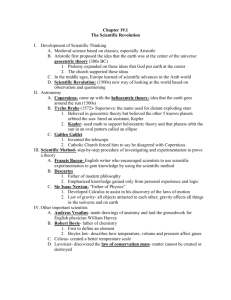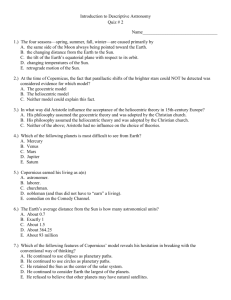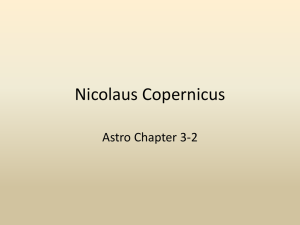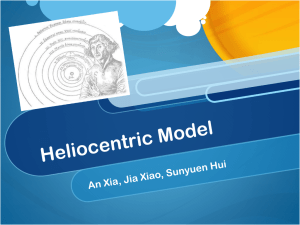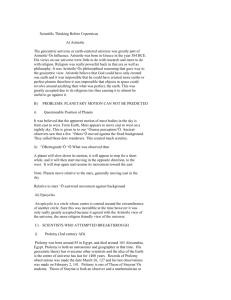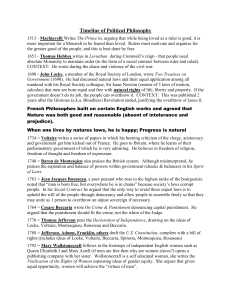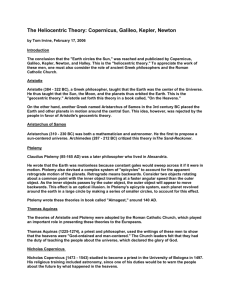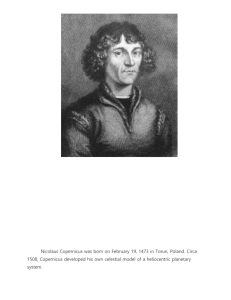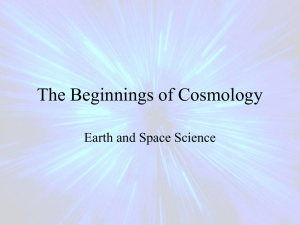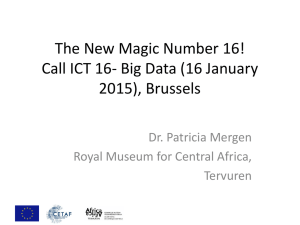File
advertisement
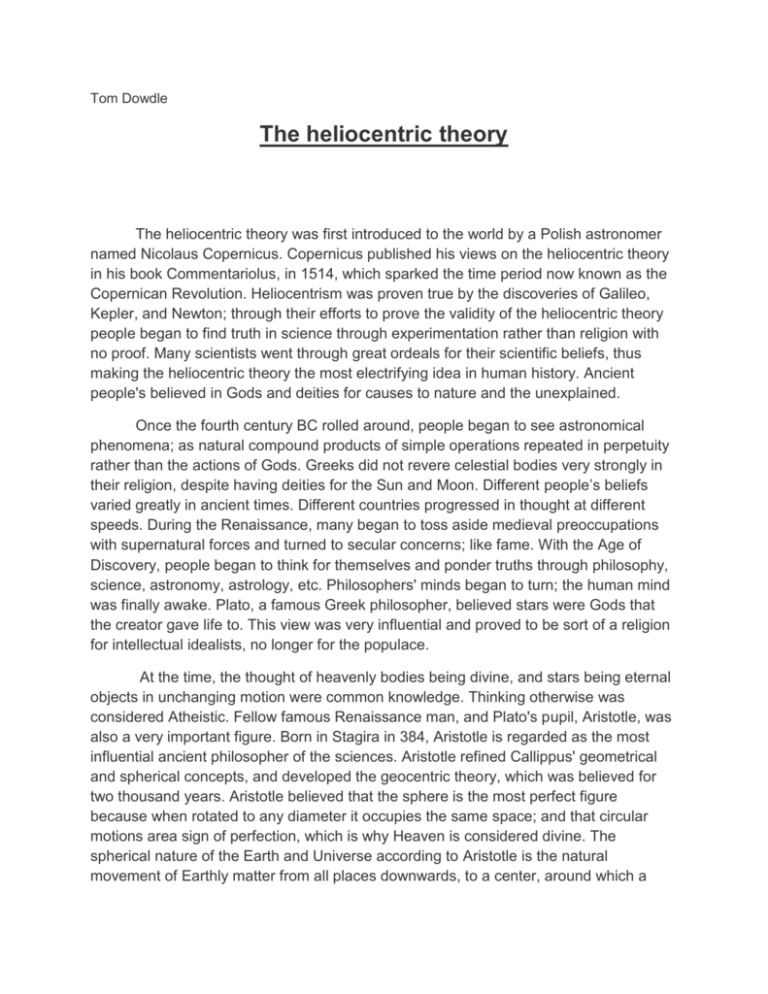
Tom Dowdle The heliocentric theory The heliocentric theory was first introduced to the world by a Polish astronomer named Nicolaus Copernicus. Copernicus published his views on the heliocentric theory in his book Commentariolus, in 1514, which sparked the time period now known as the Copernican Revolution. Heliocentrism was proven true by the discoveries of Galileo, Kepler, and Newton; through their efforts to prove the validity of the heliocentric theory people began to find truth in science through experimentation rather than religion with no proof. Many scientists went through great ordeals for their scientific beliefs, thus making the heliocentric theory the most electrifying idea in human history. Ancient people's believed in Gods and deities for causes to nature and the unexplained. Once the fourth century BC rolled around, people began to see astronomical phenomena; as natural compound products of simple operations repeated in perpetuity rather than the actions of Gods. Greeks did not revere celestial bodies very strongly in their religion, despite having deities for the Sun and Moon. Different people’s beliefs varied greatly in ancient times. Different countries progressed in thought at different speeds. During the Renaissance, many began to toss aside medieval preoccupations with supernatural forces and turned to secular concerns; like fame. With the Age of Discovery, people began to think for themselves and ponder truths through philosophy, science, astronomy, astrology, etc. Philosophers' minds began to turn; the human mind was finally awake. Plato, a famous Greek philosopher, believed stars were Gods that the creator gave life to. This view was very influential and proved to be sort of a religion for intellectual idealists, no longer for the populace. At the time, the thought of heavenly bodies being divine, and stars being eternal objects in unchanging motion were common knowledge. Thinking otherwise was considered Atheistic. Fellow famous Renaissance man, and Plato's pupil, Aristotle, was also a very important figure. Born in Stagira in 384, Aristotle is regarded as the most influential ancient philosopher of the sciences. Aristotle refined Callippus' geometrical and spherical concepts, and developed the geocentric theory, which was believed for two thousand years. Aristotle believed that the sphere is the most perfect figure because when rotated to any diameter it occupies the same space; and that circular motions area sign of perfection, which is why Heaven is considered divine. The spherical nature of the Earth and Universe according to Aristotle is the natural movement of Earthly matter from all places downwards, to a center, around which a sphere of matter will build up. Only circular motion is capable of endless repetition without a reversal of direction, and rotary motion is prior to linear because what is external, or at least could have always existed, is prior, or at least potentially prior, to what is not.; In Aristotle's book De Caelo, he speaks of the celestial sphere, the Earth's center being the same shape, and dismissing the idea of the Earth rotating at the center of the universe. He also dismisses the idea of an orbital motion of the Earth. Contradicting Aristotle, Heracleides, an astronomer, believed in the rotation of the Earth on its axis and is known to be the earliest astronomer to stand by it. He was thought to have taken the first step in "Copernicanism." It is believed in the years to follow that Copernicus was said to have mentioned Heracleides' name in this connection. Aristarchus of Samos was the first astronomer to clearly put forth a true sun-centered theory, learned from Archimedes. Aristarchus' hypotheses are that the fixed stars and the Sun are stationary, that the Earth is carried in a circular orbit around the Sun, which lies in the middle of its orbit, and that the spheres of fixed stars, having the same center as the Sun, is so great in extent that the circle on which the Earth is supposedly carried is in the same ratio to the distance of the sphere has to its surface. If Aristarchus did believe in heliocentrism, he still could not prove the differences in the Earth's motion and seasons, which explains its failure to be accepted. Although scientists such as Eudoxus, Callippus, and Aristotle all came up with Earth-centered systems based by providing a center for all motions, Ptolemy was triumphant for he was able to explain sphere sizes and achieved a single system, which was not done by the others. When Ptolemy achieved a single system, the sizes of the shells accommodating maximum and minimum planetary distances were settled on the principle that there must be no void, no wasted space, between them. His misconception was he believed that if the Earth was not fixed entirely, it would shatter, even though Copernicus reveals that planets' distances from Earth and motions vary, and that the Earth endlessly repeats in motion. Despite the Catholic Church adopting Ptolemy's and Aristotle's beliefs of geocentrism, those theories did not correspond to the astronomical observations of the time. The Copernican Revolution began during the European Renaissance and was named after Nicolaus Copernicus. This period saw elements of a modern scientific outlook extend its boundaries into areas of enquiry where observation and measurement had hitherto been less important than philosophical speculation and a priori reasoning. Although the Copernican heliocentric theory dealt directly with the structure of the solar system, its indirect consequences embraced the whole fabric of thought, inaugurating a breakthrough in people's outlook on the world. Copernicus liberated the human mind, which had been fettered up to his day by traditional conventions, and he opposed the basing of science solely on sensory experiences. Taking a stand against the entire world of that time and against the supreme authority that he recognized the church and the Holy Scripture, against the views consolidated and sanctified by the knowledge of scholars of many previous centuries he instilled into the minds of men boldness in thinking, but he also taught them humility in the quest for truth. Copernicus' science of the stars is also a science of man and his place on an Earth which is spinning through the universe. Copernicus published the first outline on heliocentrism in his book Commentary on the Hypothesis of the Movement of Celestial Orbs, in 1514. It was the first of its kind, without all of the mathematics. The Copernican theory explained the Earth-Sun line and gave a more plausible reason as to why the Sun's role is important in the motions of the Moon and planets in the solar system when compared to Ptolemy's. By introducing the Sun into the theory of motion of every planet, Copernicus made it possible to represent all in a single system. The heliocentric system presented the planets positions more logically, going around or below the Sun. It also explained the relative sizes of the planet's retrograde arcs and why outer-stellar planets are brightest in opposition. Society's reaction to the heliocentric system was not a favorable one. Many people thought "Who would dare to place Copernicus' authority higher than the Holy Scripture? Believing that the Earth rotates on its axis, planets revolve around the Sun, and planetary orbits were elliptical due to the force of gravity was then thought of as inconceivable. Copernicus was passionately criticized by colleagues and peers for his enthusiasm of the ancient philosophers, who were viewed as incorrect. The only point that Copernicus was trying to makes was that "...there does not exist any common center for all the celestial orbs or spheres; the center of the Earth is not the center of the universe; but only the center of gravity and the center of the Moon's path ;all the planets revolve around the Sun, which is the center."
